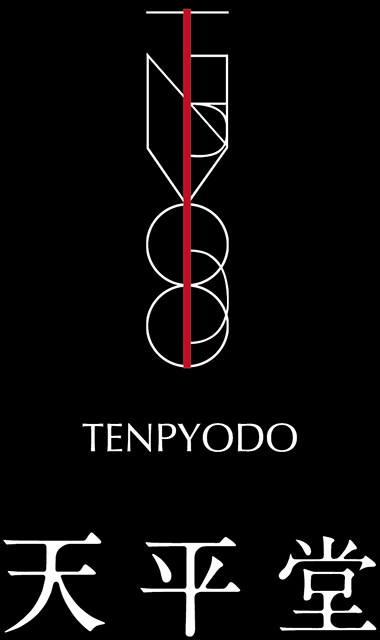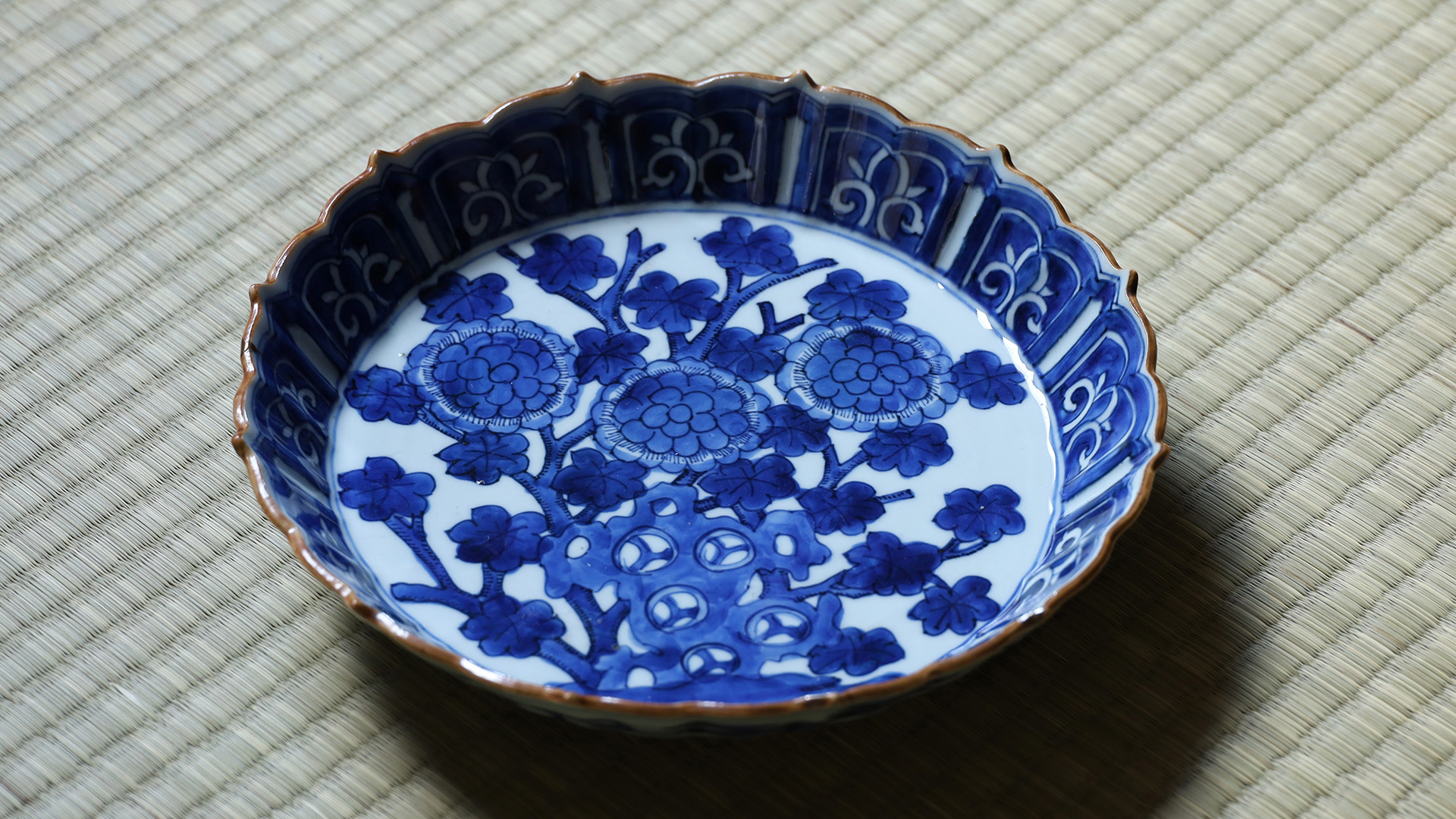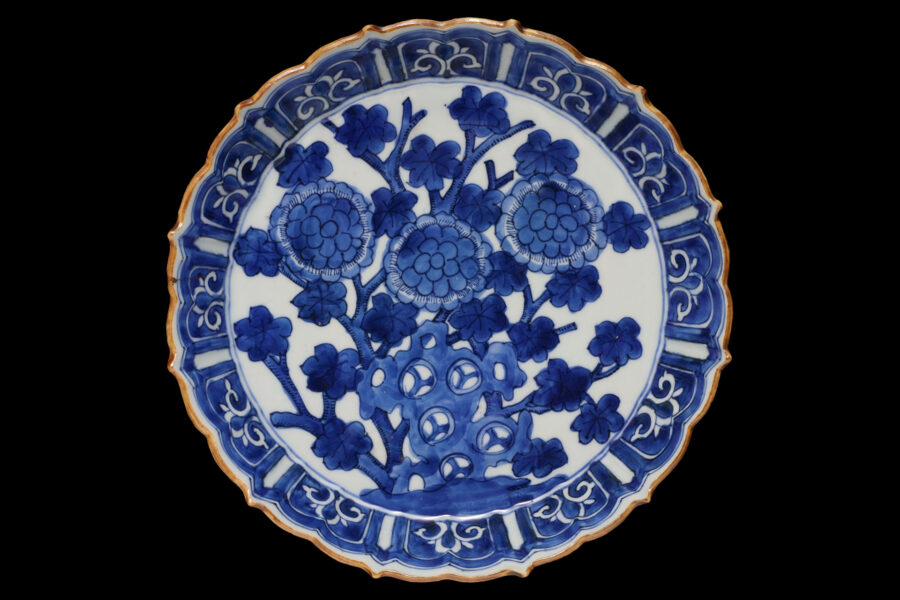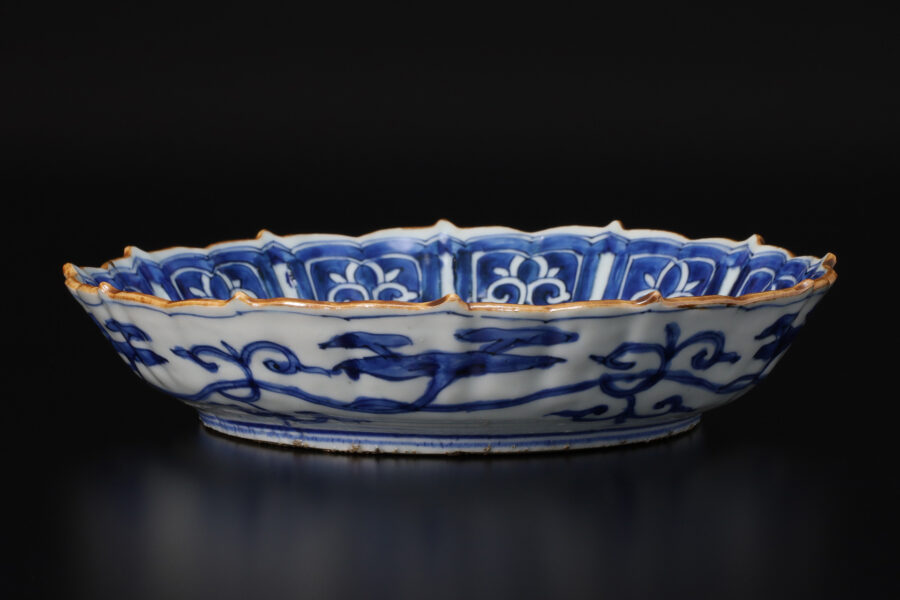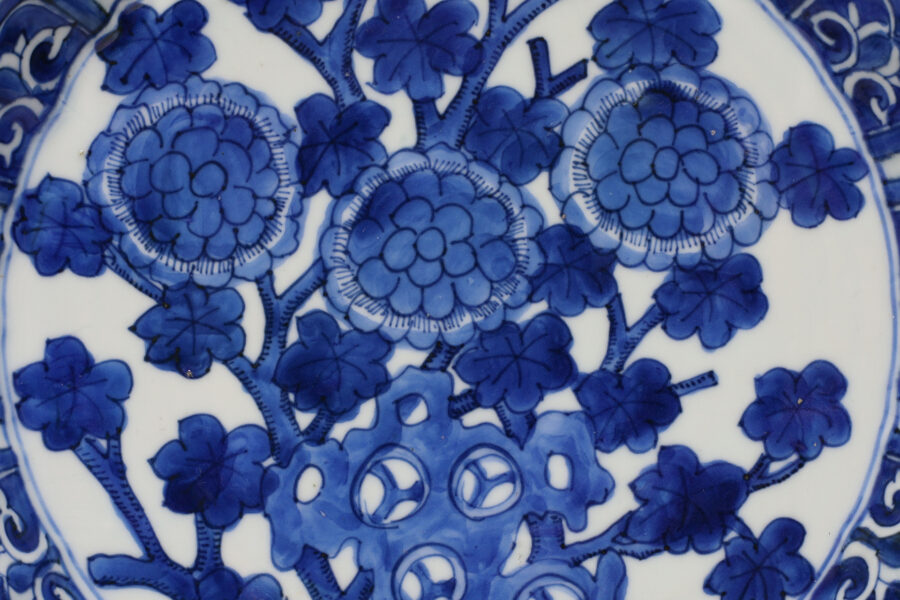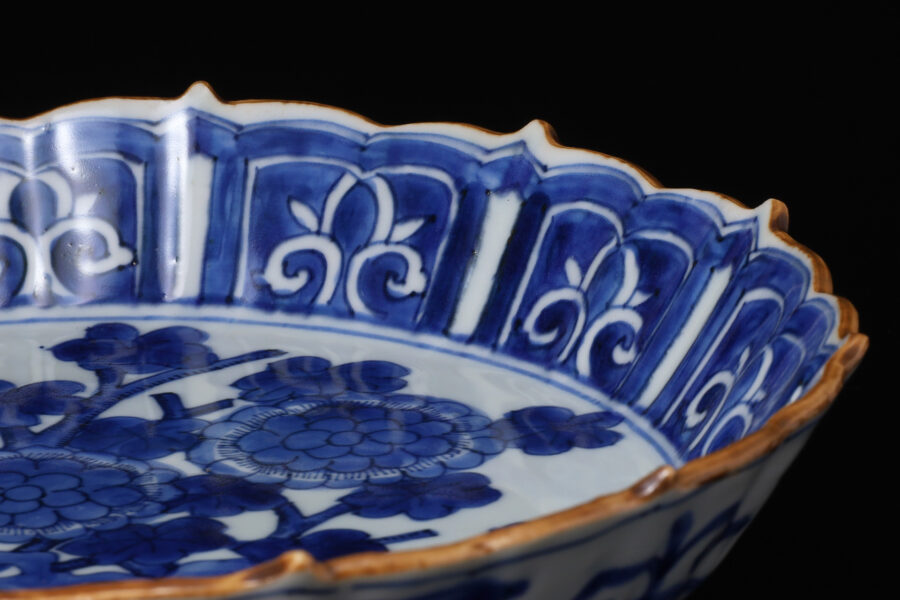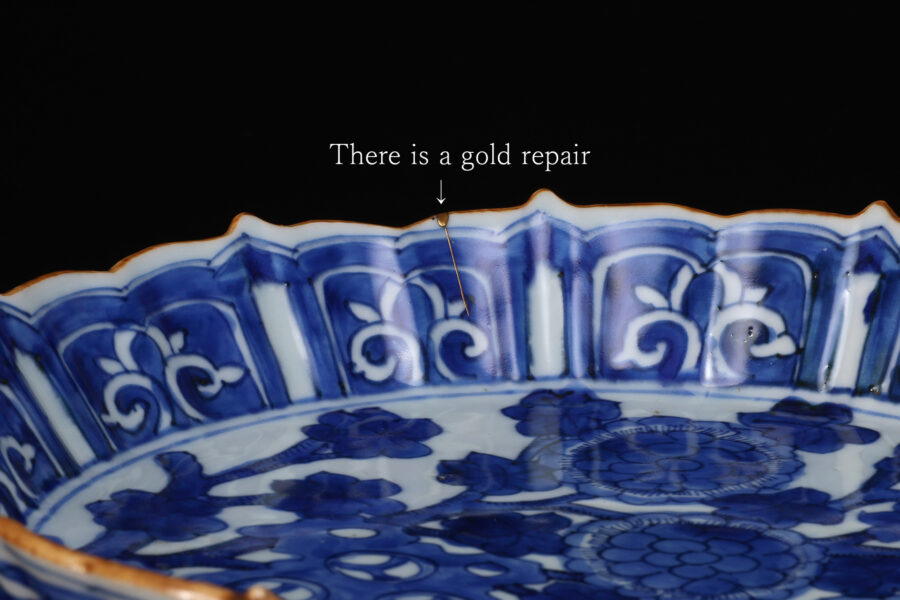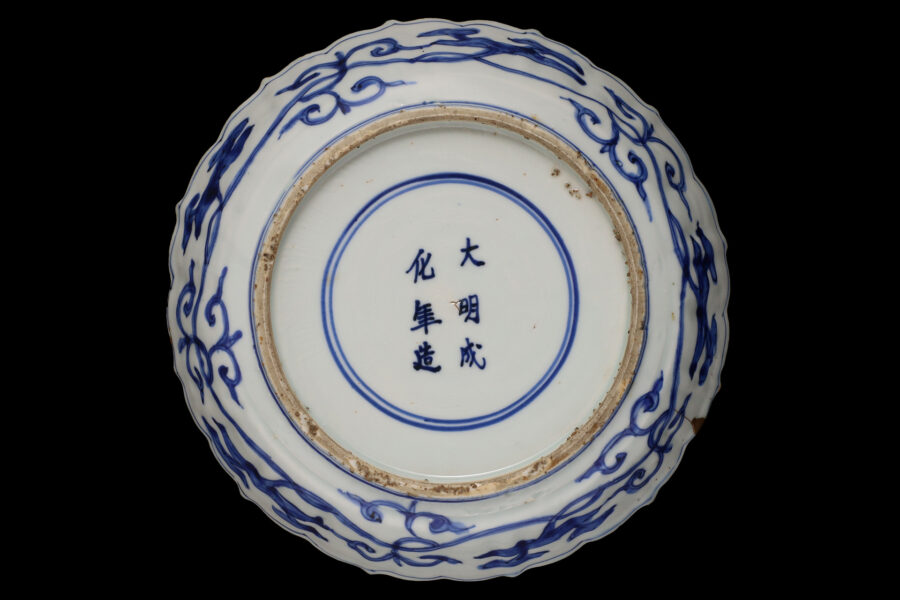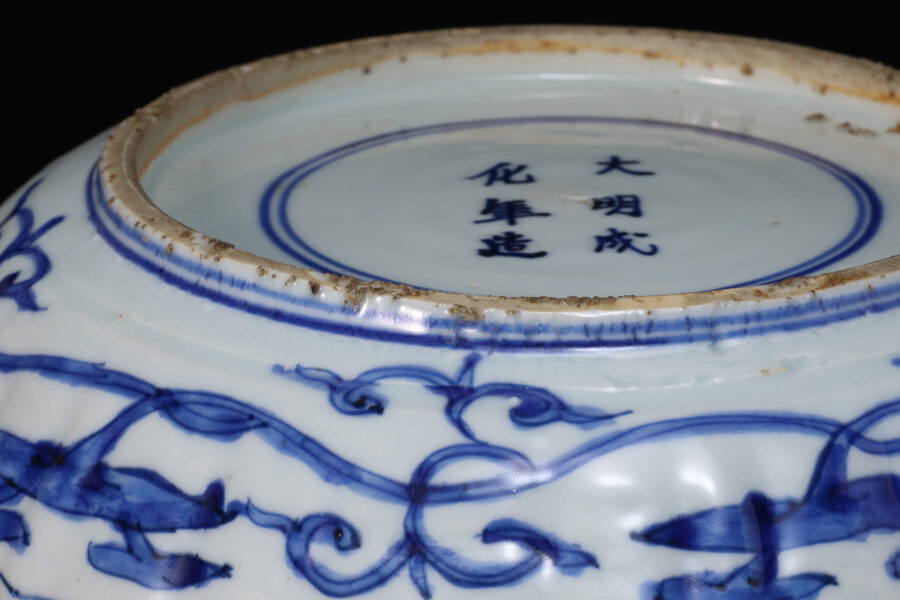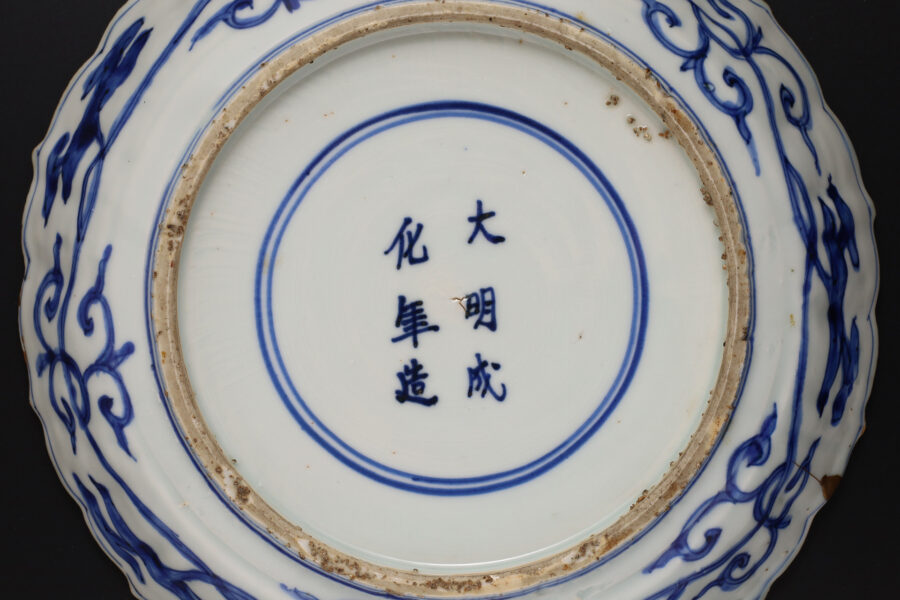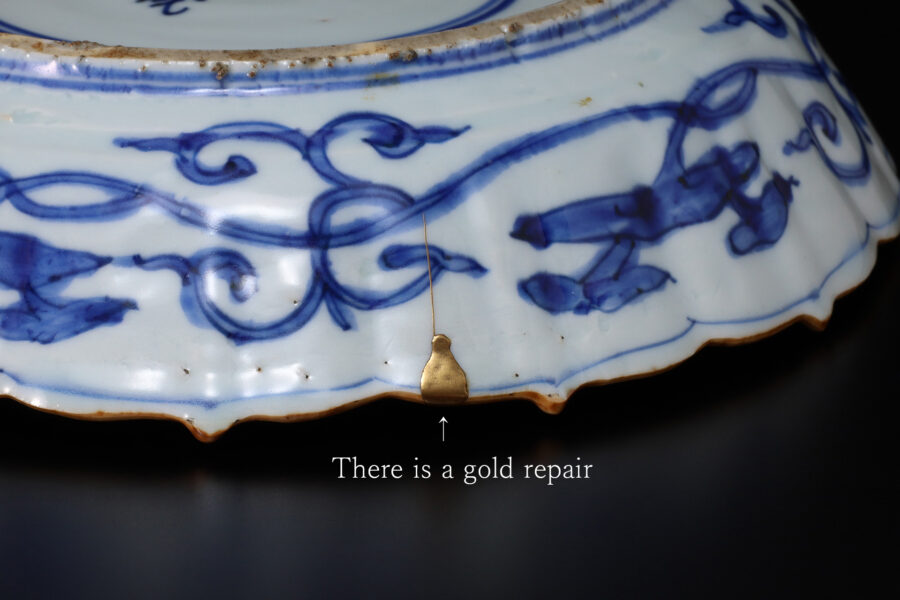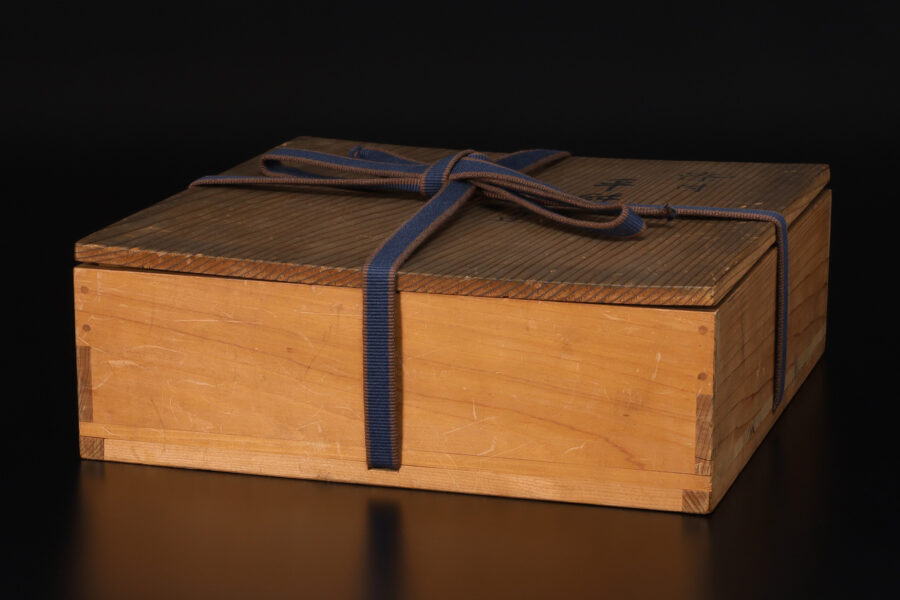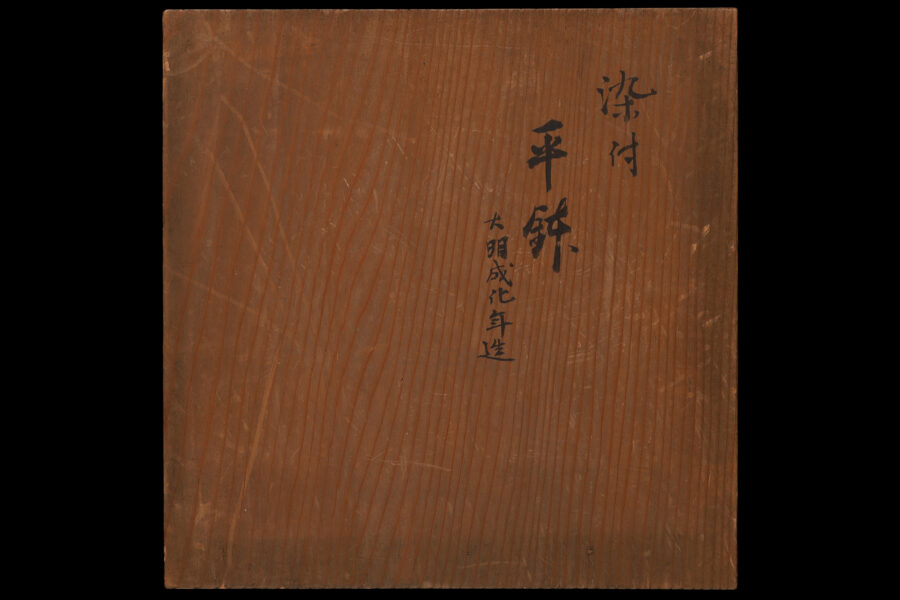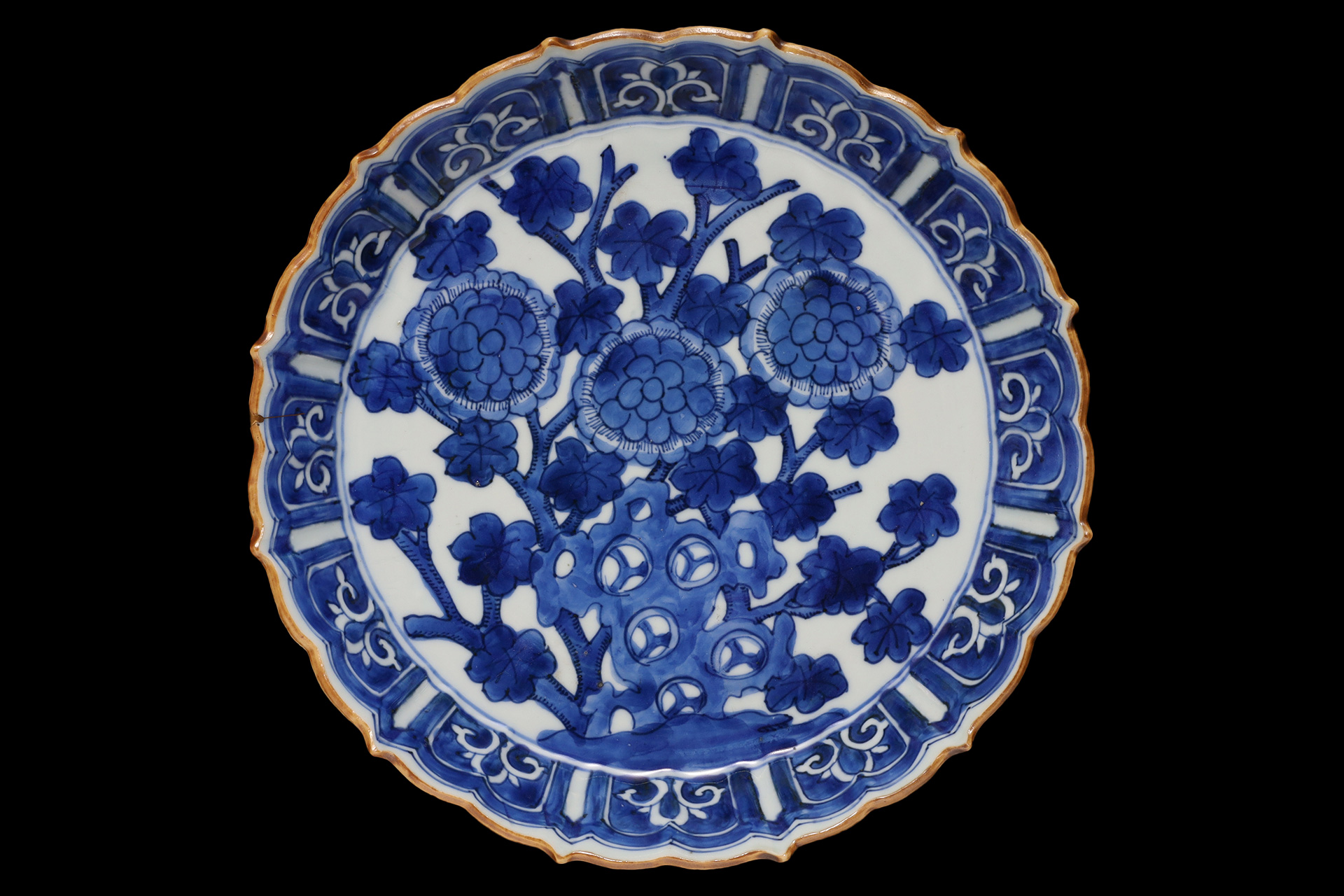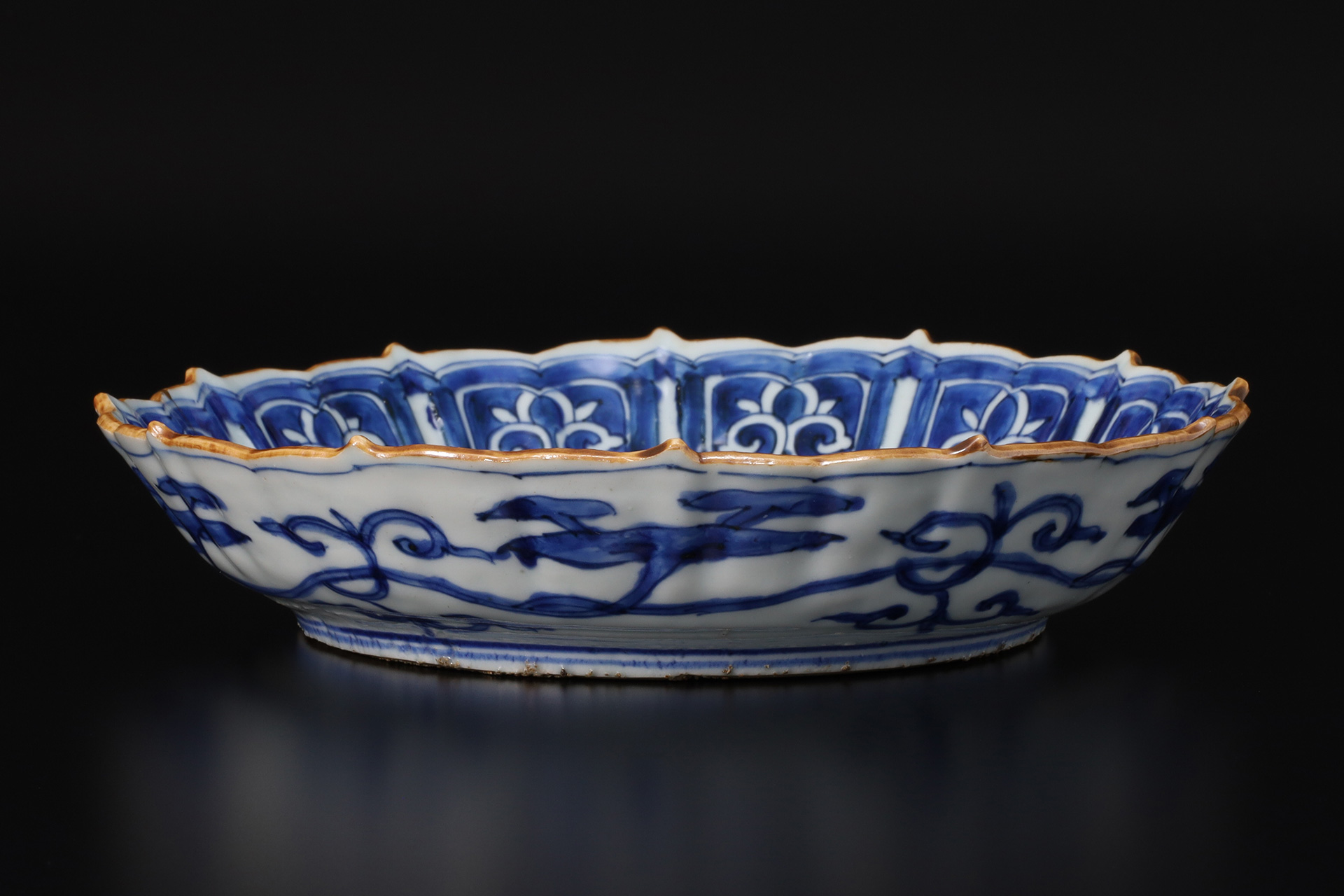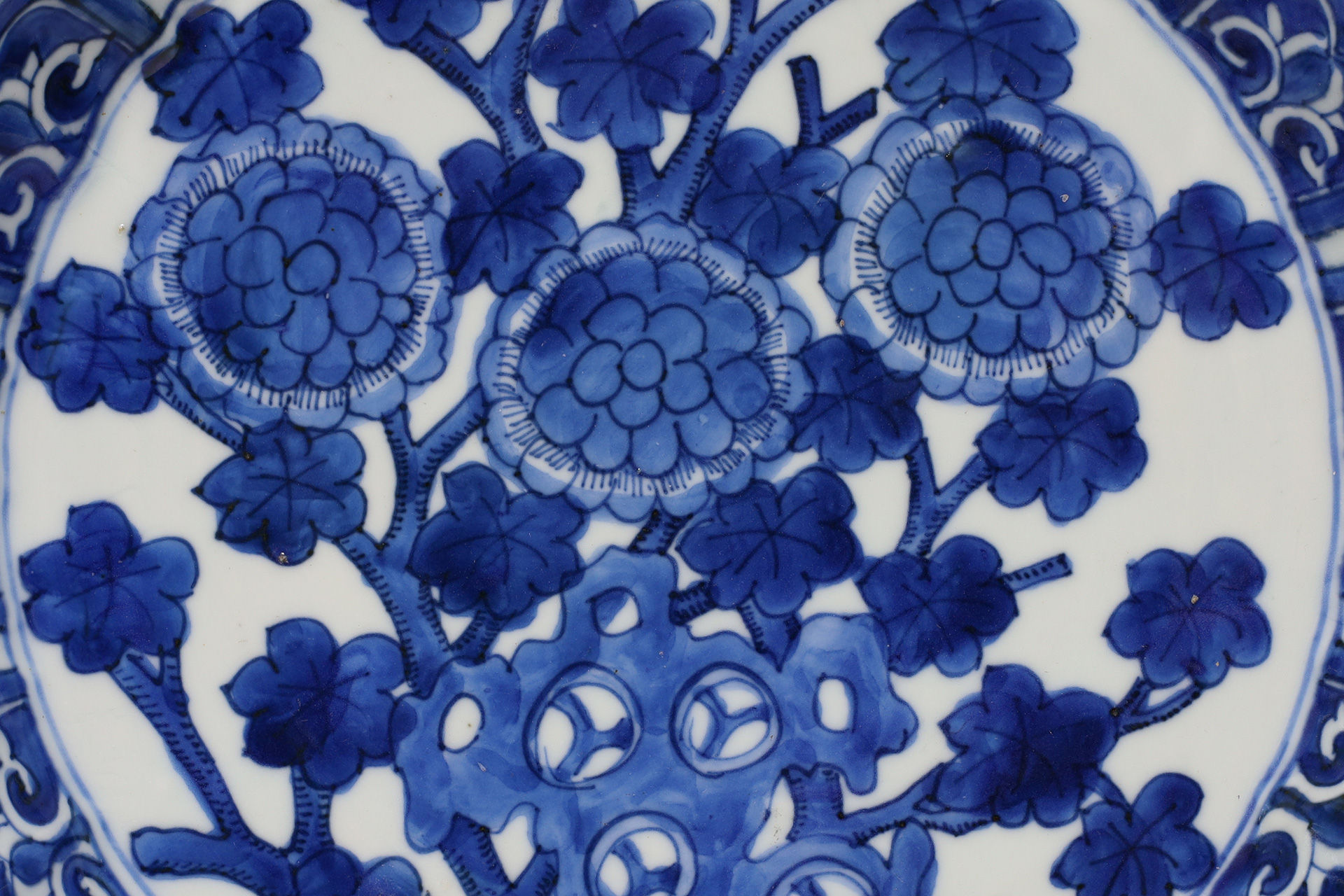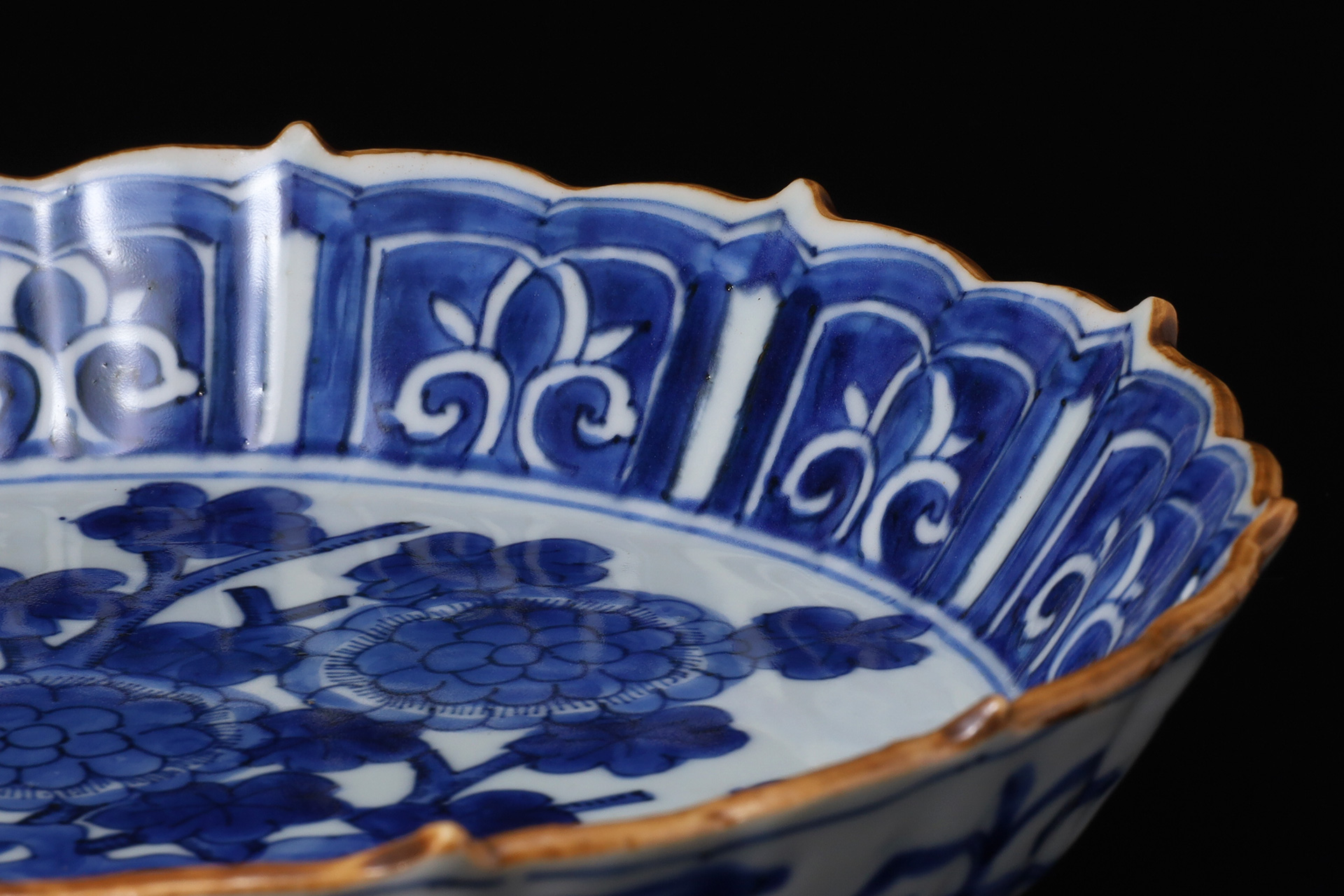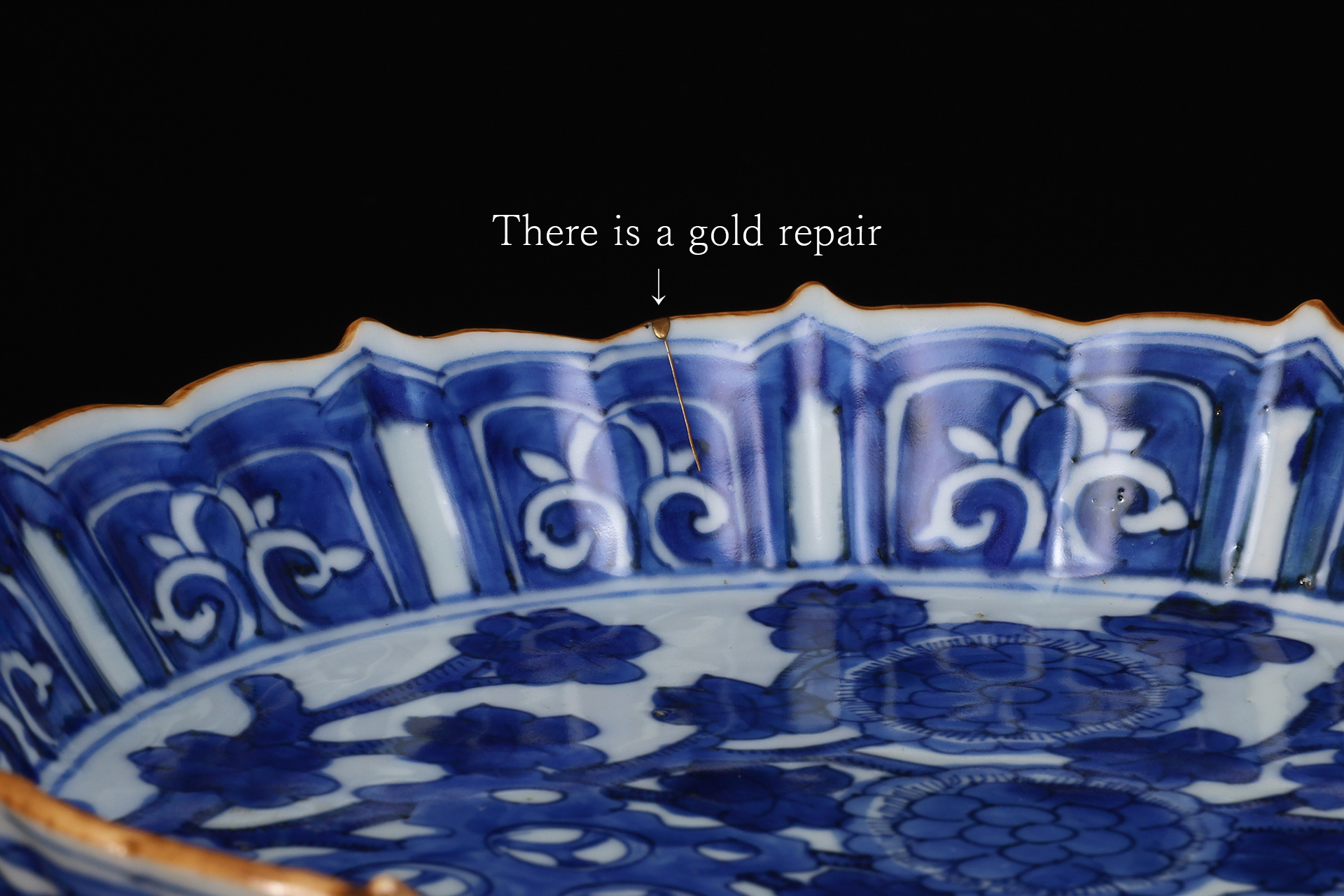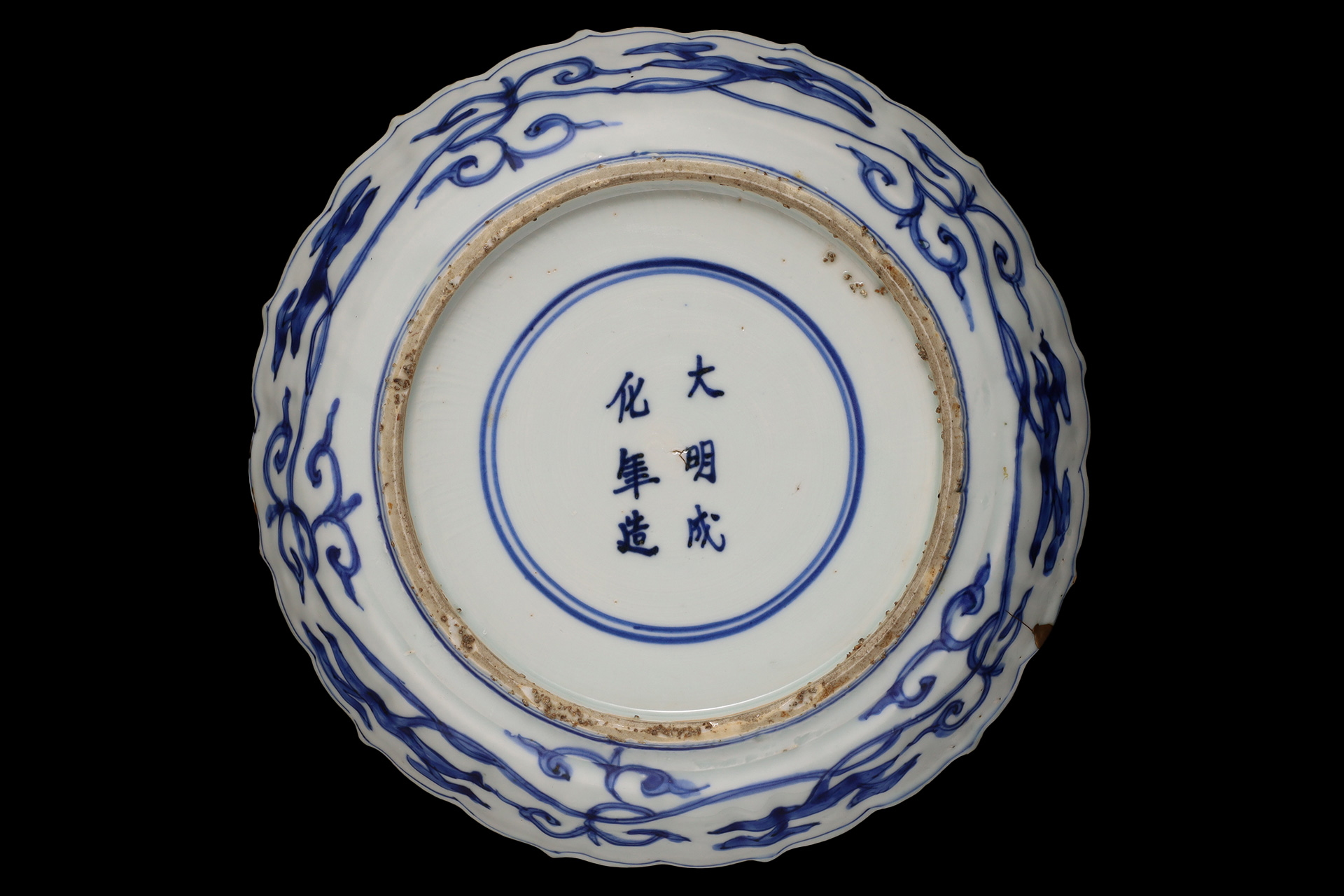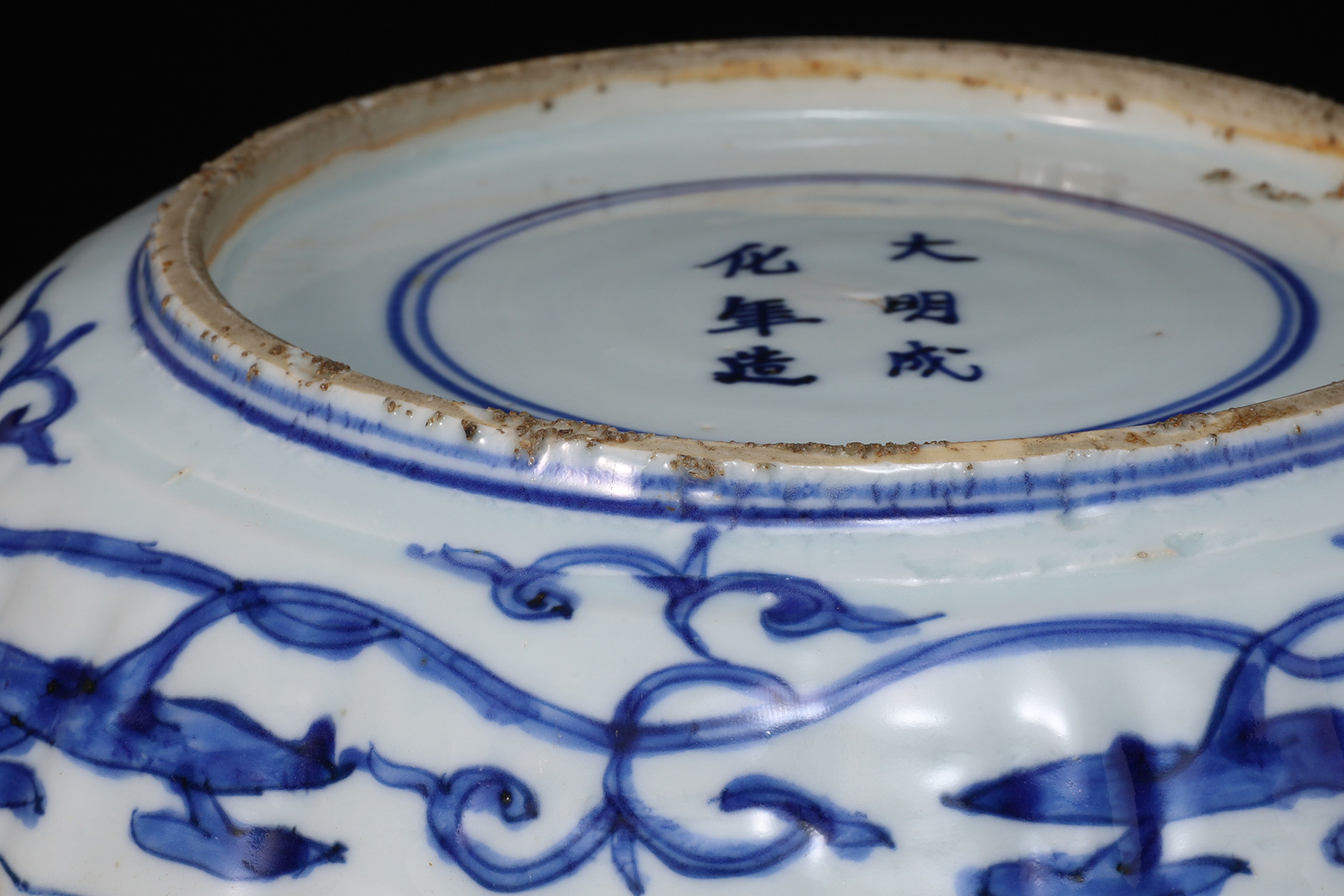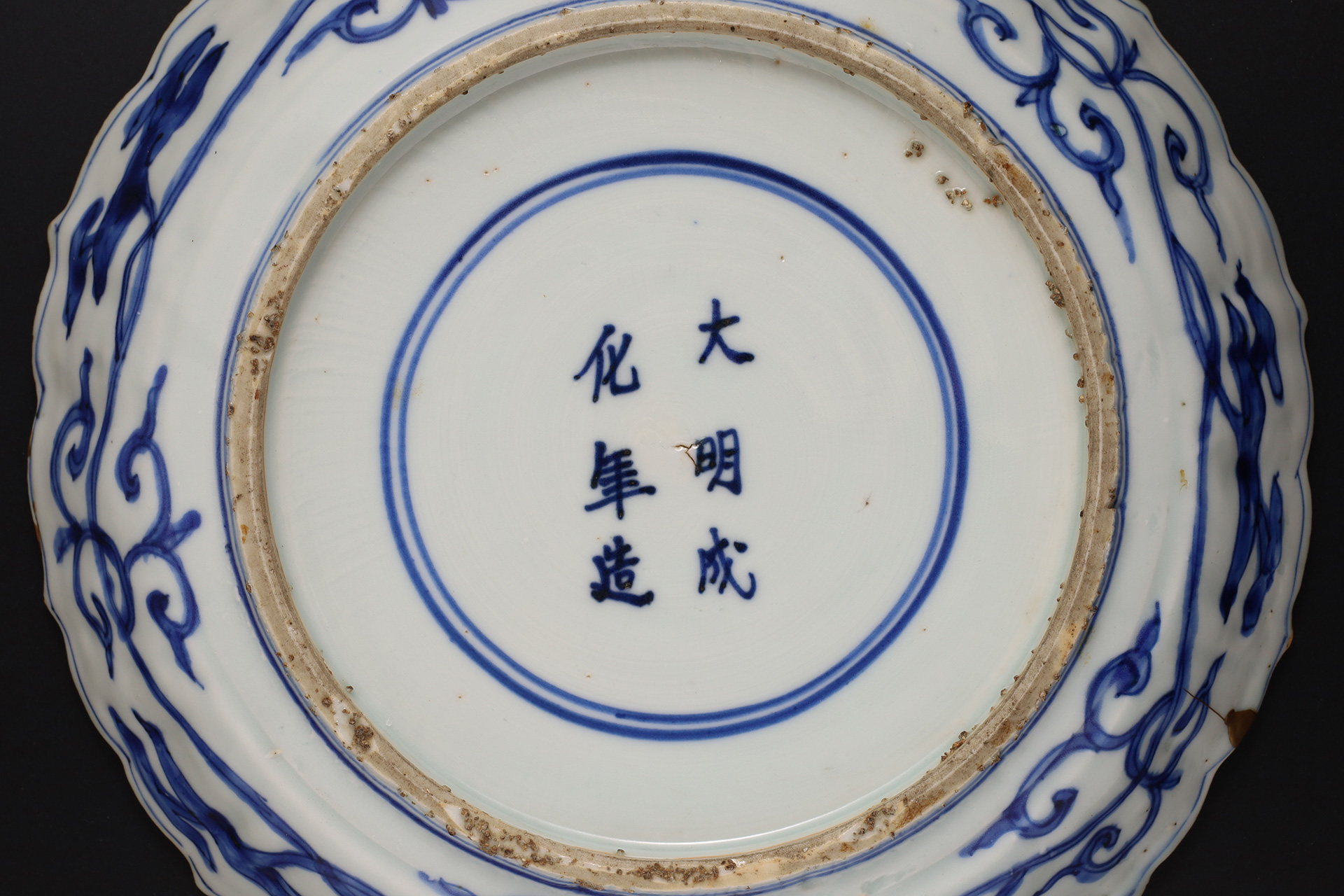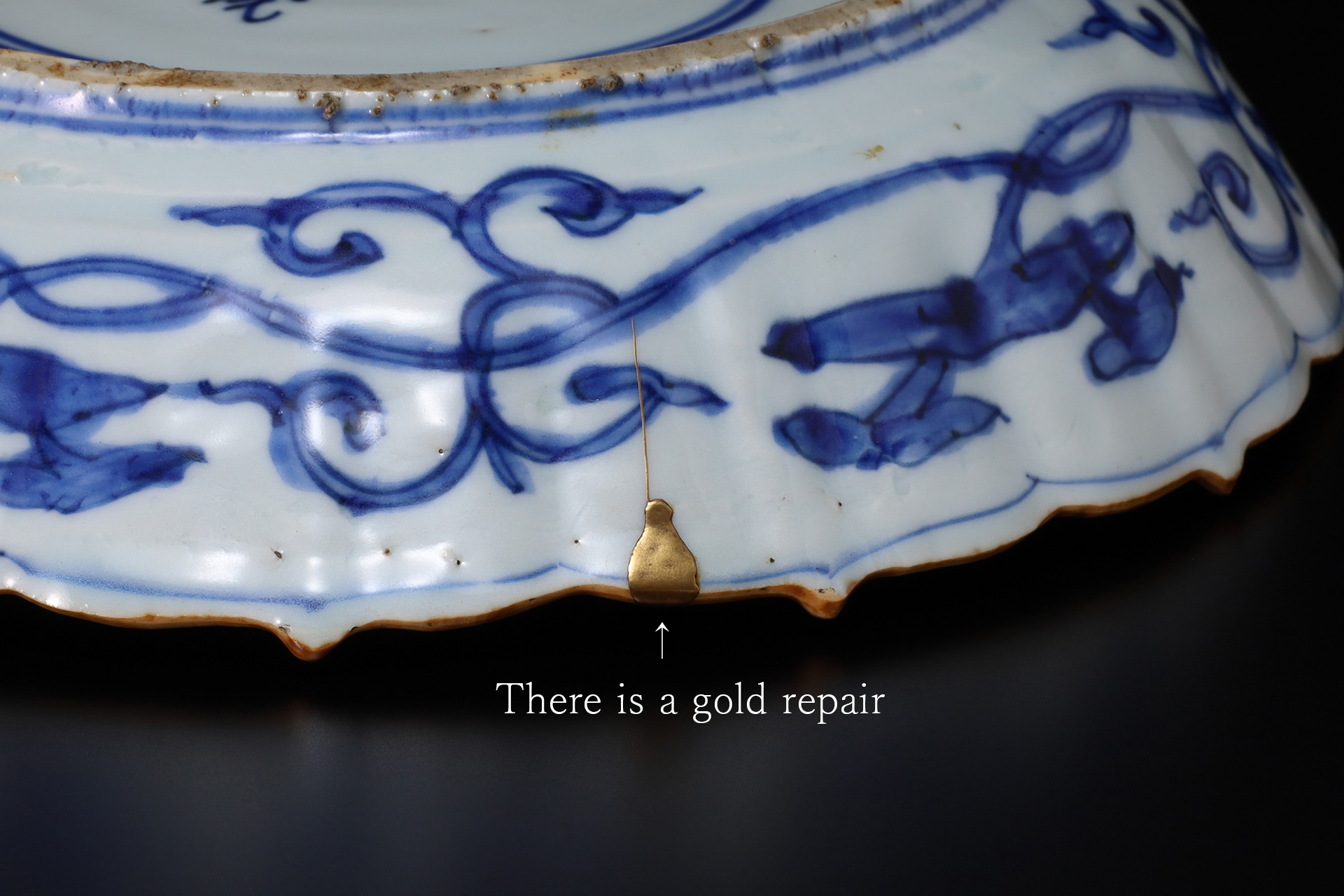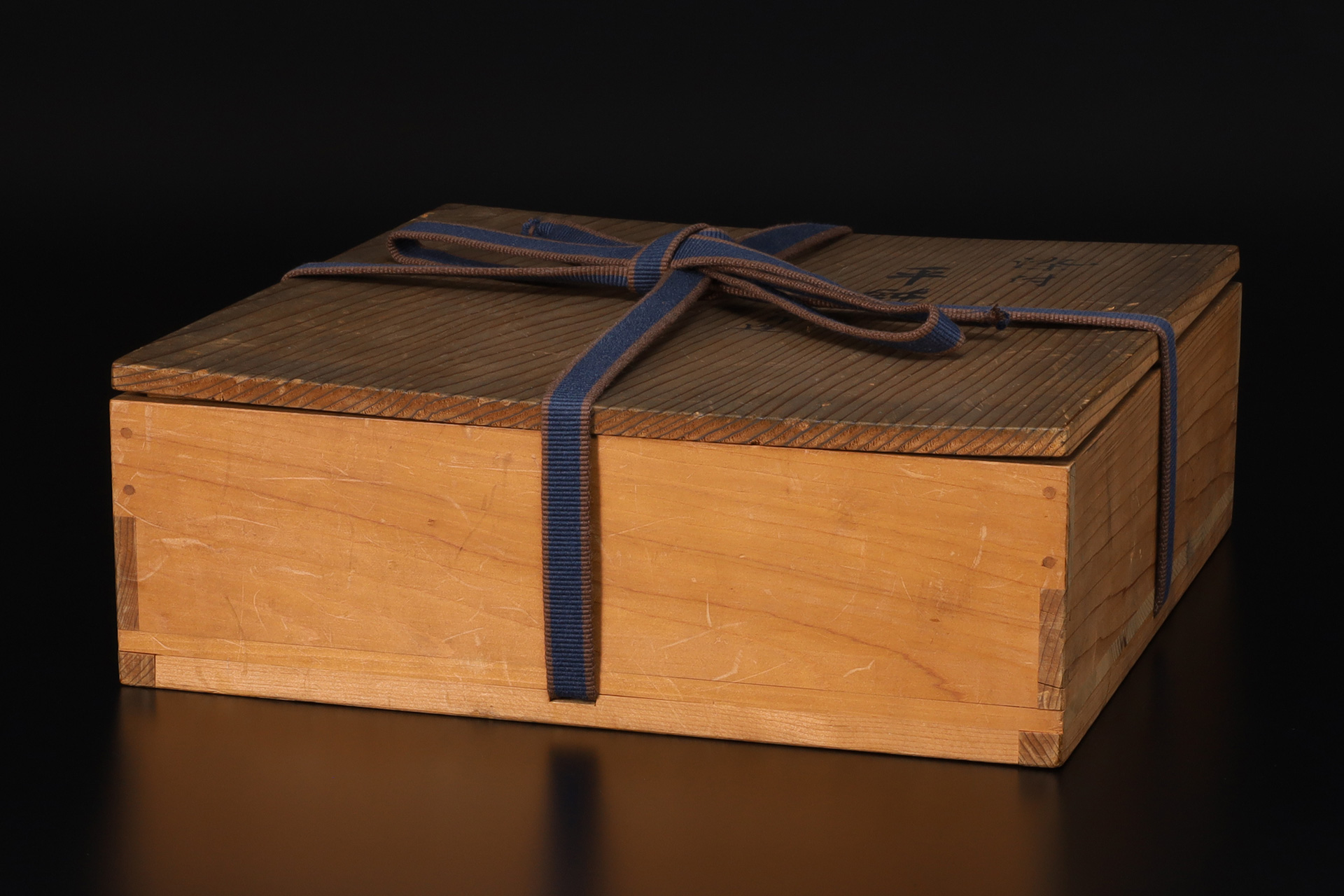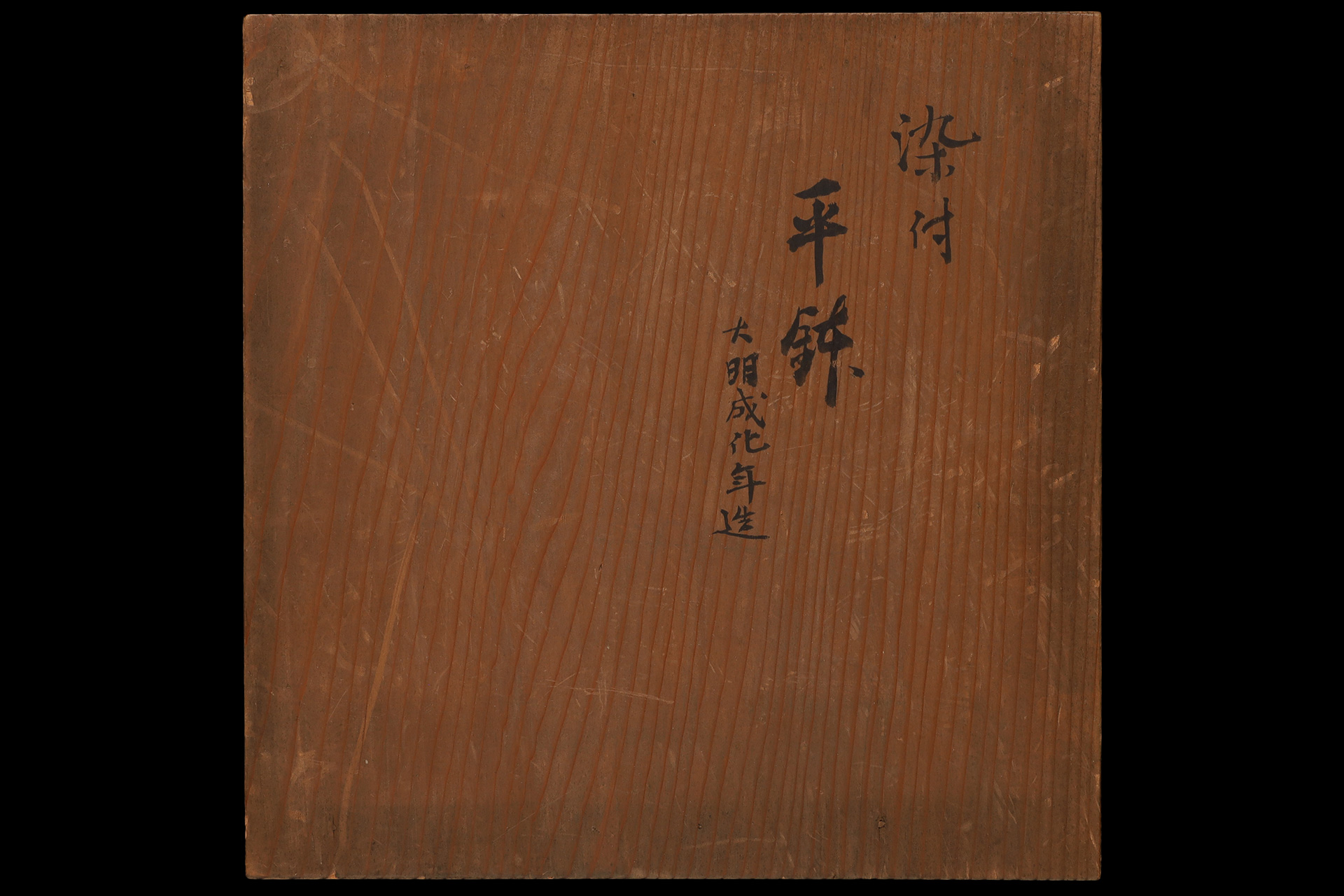Shonzui is the finest porcelain produced in jingdezhen-kiln mainly during the chongzhen era(1628-1644) at the end of the ming dynasty. The recipients of this work include tea masters, samurai, temples, and wealthy merchants. With its extremely thick shape, sharp edges, and fine blue-and-white, it exudes a majestic presence.
Inquiry
- Product Code
- 250603-2
- Period
- Ming Dynasty
Early 17th century
- Weight
- 803g
- Diameter
- 23.0cm
- Height
- 5.0cm
- Bottom Diameter
- 14.7cm
- Description
- Old-Wooden Box
- Condition
- There is a gold repair at the edge
It meets the requirements of the excellent work with its beautiful base, ideal blue-and-white, and good firing.

Shonzui
Shonzui refers to the top-quality porcelain that was fired at the Jingdezhen kilns in China, during the late Ming dynasty’s Chongzhen era (1628-44). The name comes from the fact that there is a blue-and-white (sometsuke) inscription on part of the vessel that reads “Gorodayu Goshonzui-Made” which is interpreted as meaning “Made by the eldest son of the fifth son of the Go family”. There is a theory that Kobori Enshu was involved, and the buyers included tea masters, samurai, Zen temples, and wealthy merchants. It is made from high-quality white porcelain and is thick and heavy when you hold it. It is characterized by deep crystal-clear glaze, and the focus is on filling every corner of the surface of the vessel with auspicious and geometric designs. Some of the vessel shapes are modeled on Momoyama tea pottery, and known works include tea utensils such as water container, tea bowl, chaire, incense container, tea towel container, and shaking container (furidashi), as well as luxury tableware such as sake bottle, bowl, mukozuke, dish, and sake cup. Adding Shonzui to a formal tea gathering arrangement creates a sense of cleanliness and harmonizes with the unglazed pottery and colored ware.
